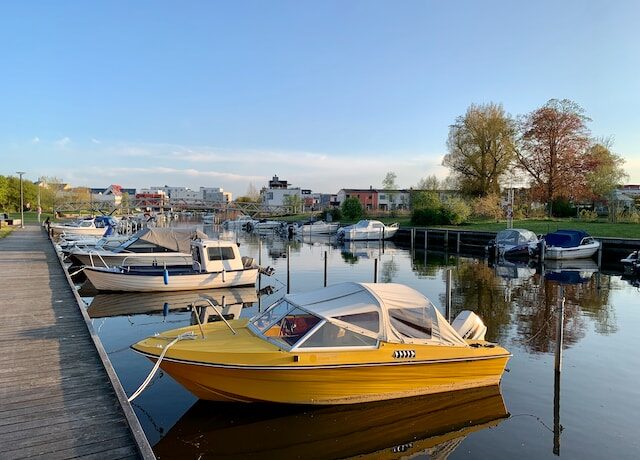Your primary focus should always be safety when boating. In order to prevent collisions and maintain a safe environment, it is crucial to make sure that your boat is visible to other boaters whether you are cruising along the open sea or navigating through a crowded harbour. Boat navigation lights are useful in this situation.
These straightforward but essential tools are intended to keep you and other boaters safe by letting them know that you are on the water. We’ll delve further into the realm of boat navigation lights in this blog post, learning about their various forms and how they may help you stay visible in any circumstance. So put on your life jacket and let’s learn more about these crucial devices!

What do navigation lights on boats do?
Any type of watercraft must have boat navigation lights. They play a vital role in maintaining visibility and avoiding crashes, particularly at night or in low light. These lights make you more visible to other boaters, as well as to commercial ships and even aircraft.
There are various boat navigation light kinds, each with a distinct function. The most typical of these are stern lights, which are white and situated close to the back of the ship. These lights show the boat’s location when viewed from behind. However, when a boat is facing forward, green starboard side lights show its right side, while red port side lights denote its left side.
Masthead or steaming lights are another type; they are typically white in colour and placed at least one metre above deck level. When two vessels are about to collide head-on or very nearly so, these lights aid in vessel identification.
Additionally, yachts include all-around anchor lights for anchored boats at night or in conditions that limit visibility, such foggy weather.
In conclusion, boat navigation lights are extremely important for guaranteeing water safety since they make boats visible to other boaters. Every boater should become familiar with these various navigational lights in order to travel safely and prevent accidents.
Various Boat Navigation Light Types
There are various different types of boat navigation lights, each with a distinct function. Knowing about these various kinds will help you stay safe on the water and lower the chance of collisions.
- Steaming Light: To signal a ship’s presence when it is at sea at night, a white light is often put on the front or centerline of the vessel. It ought to be obvious from all angles.
- Sidelights: Located on either side of a boat’s bow, sidelights, also referred to as running lights, are red and green lights. The starboard (right) side of the ship is indicated by the green light, while the port (left) side is indicated by the red light.
- Sternlight: When operating in low visibility conditions, this white light, which is positioned at or close to the stern (rear) of a boat, aids other vessels in determining its direction and size.
- All-Round White Light: Some boats may have an all-round white light positioned above their decks as an alternative to separate steaming and stern lights. This single light acts as both a presence indicator when travelling and a direction indicator when not using a motor.
- Anchor Light: A yacht must display an anchor light when moored or anchored for an extended period of time at night. This light is typically a 360-degree white light that is visible from all directions.
- Emergency Lights: Additional flashing lights may be employed in emergencies to draw attention and warn adjacent vessels of potential threats, such as distress signals or collision warnings.
Keep in mind that depending on the size of your boat and the area it operates in, each type of navigation light has unique requirements for positioning, brightness, colour intensity, and visibility range.
Knowing how to use these different boat navigation lights can help you stay visible on the water while ensuring your safety and the safety of others who share the water with you.
For every boater, understanding boat navigation lights is essential. By keeping boats visible and preventing collisions while at sea, these lights act as a crucial safety component.

Boaters may navigate with confidence, especially at night or in poor visibility situations, by understanding the many types of boat navigation lights and their significance. Having properly working navigation lights on your boat—power, sail, or any other kind of vessel—is crucial to your safety on the sea.
Keep in mind to always abide by local laws governing boat lighting requirements. Your navigation lights will be in good working order when you need them the most if you regularly maintain and check them.
Don’t forget to check your boat’s navigation lights and make sure they are flashing brightly the next time you set out on a boating expedition. Enjoy your time on the water safely while remaining visible!





